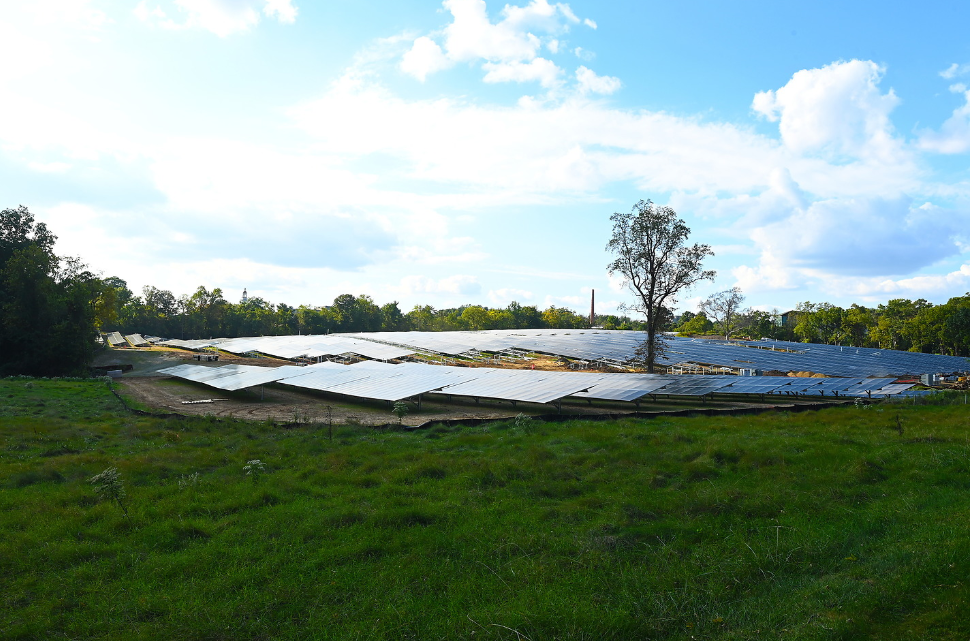Environmental Impact
The Office of Campus Sustainability, along with the Facilities Planning and Management team, continually monitor metrics related to Catholic University’s use of energy and water utilities and to our generation of waste and greenhouse gas emissions. These metrics help us understand the environmental impact of Catholic University and Office of Campus Sustainability initiatives as well as provide insight into campus operations to support decision making.

Energy, in the form of electricity or natural gas, accounts for the majority of campus utilities. Electricity is primarily used for cooling, lighting, and powering general appliances and computers. Natural gas is primarily used for powering boilers and other steam system components that warm buildings on campus. Energy use over the past decade has remained mostly consistent, with a peak in FY 2019 and a dip in FY 2021 due to a decrease in campus occupancy during the pandemic. In FY 2022, we started seeing a slight year-over-year increase in energy use with the return of faculty, staff, and students to campus on a more regular schedule and the addition of two new buildings to campus: Garvey Hall in FY 2024 and the Conway School of Nursing Building in FY 2025.
Water is used for faucets, toilets, and showers as well as to heat and cool buildings on campus. Water use has followed a similar trajectory as energy, remaining mostly consistent but with a significant decrease in water use during the pandemic and increases in subsequent years due to the return of campus activity and the construction of two new buildings. Water use has remained stable over the past three years.
Progress toward goals:
- Energy: As of the end of FY 2025, the University has achieved a 9% reduction in energy use compared to FY 2016, missing the target to achieve a 20% reduction by FY 2025.
- Water: As of the end of FY 2025, the University has seen a 16% increase in water use compared to FY 2016, missing the target to achieve a 20% reduction by FY 2025.
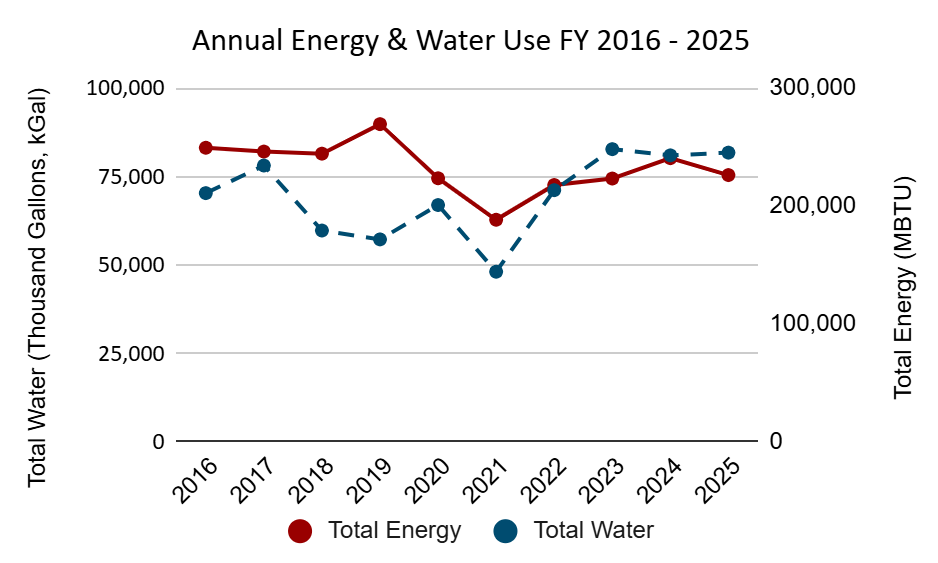
Waste refers to all items discarded and removed from the University, including recycling, compost, and trash. University waste data is available starting in FY 2020. From FY 2021 to 2022, we saw an increase in trash generation (waste sent to landfill), which can be attributed to the increased use of masks, cleaning supplies, and single use items during the COVID-19 pandemic. However, in the years since the community returned to campus, the diversion rate has increased significantly, from a low of 24% in FY 2022 to a high of 51% in FY 2025.
Progress toward goals:
- Waste: As of FY 2025, the University has achieved its goal to divert over 50% of waste generated on campus from landfill.
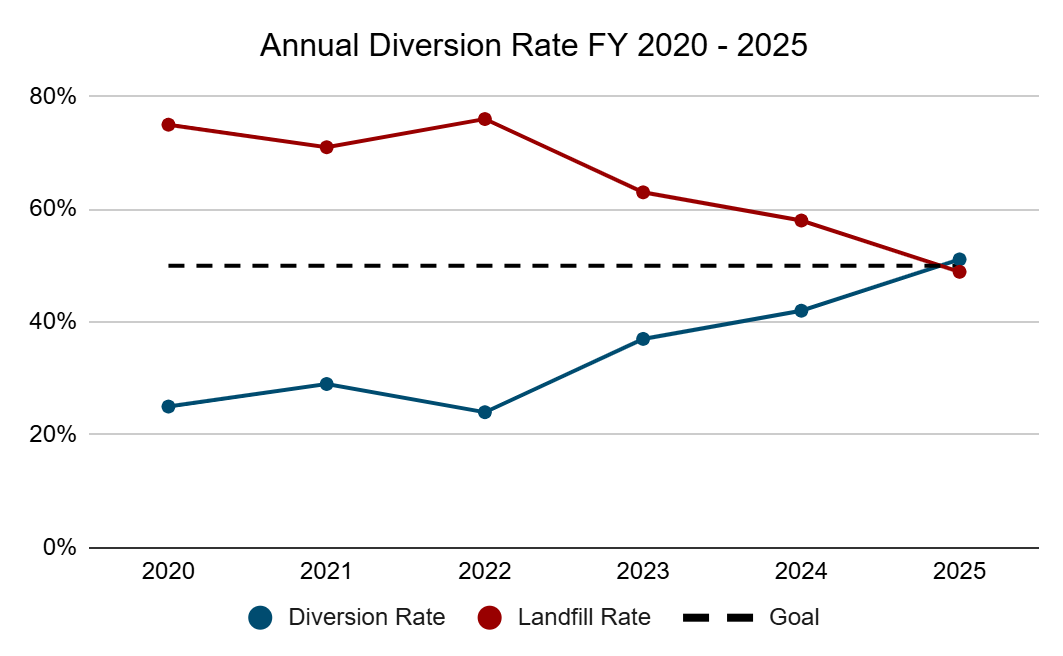
Greenhouse gas emissions are the result of everyday activities such as turning on lights and driving to campus. These emissions, which include gases such as carbon dioxide, methane, and nitrous oxide among others, contribute to global climate change.
In FY 2024, Catholic University emitted 14,757 metric tons of carbon dioxide-equivalent emissions. This is equivalent to the greenhouse gas emissions from driving 37.6 million miles in an average passenger vehicle or the carbon dioxide emissions from charging 1.2 billion smartphones.
Since the University first started tracking emissions in FY 2007, it has reduced total emissions by over 64%. Recent years show a gradual decline in overall emissions, despite an increase in inhabited building space on campus due to the opening of Garvey Hall and the Conway School of Nursing.
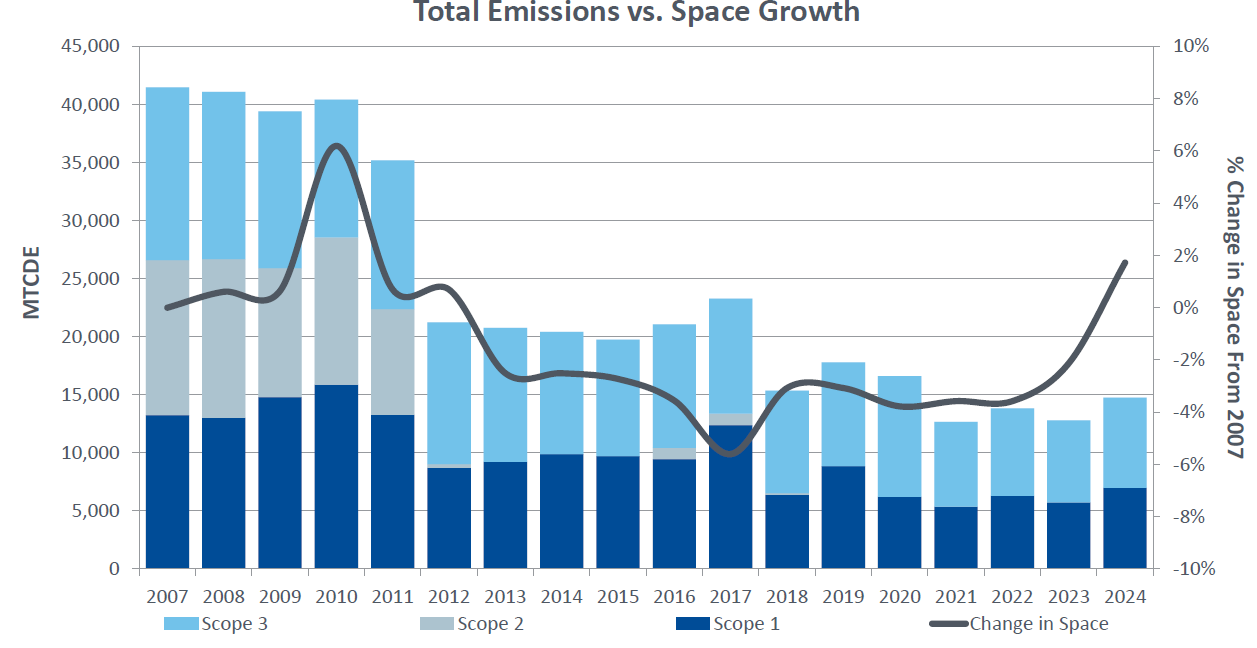
In greenhouse gas inventories, emissions are broken into three categories to better understand the source of emissions and how to control them.
- Scope 1 emissions are emissions that an organization directly controls. This category includes on-campus natural gas use, fleet fuels, and refrigerants. Scope 1 emissions increased by 22% in FY 2024 compared to FY 2023.
- Scope 2 emissions are emissions from purchased electricity sources, such as electricity, steam, heat, and cooling. Catholic University has zero scope 2 emissions due to the purchase of Renewable Energy Credits (RECs). RECs ensure that the electricity we purchase is offset with the generation of renewable energy.
- Scope 3 emissions, which are the most difficult to measure and control, include emissions from sources that are not owned or controlled, but that the organization indirectly impacts. Scope 3 includes emissions from commuting, travel (including study abroad and directly financed University travel), waste generation, wastewater, paper purchases, and transmission and distribution losses (associated with electricity use on campus). Scope 3 emissions decreased by 10% in FY 2024 compared to FY 2023.
Progress towards goals:
- As of the end of FY 2024, the University has achieved a 30% reduction in greenhouse gas emissions compared to FY 2016, exceeding the target to achieve a 20% reduction by FY 2025.
Conclusion
-
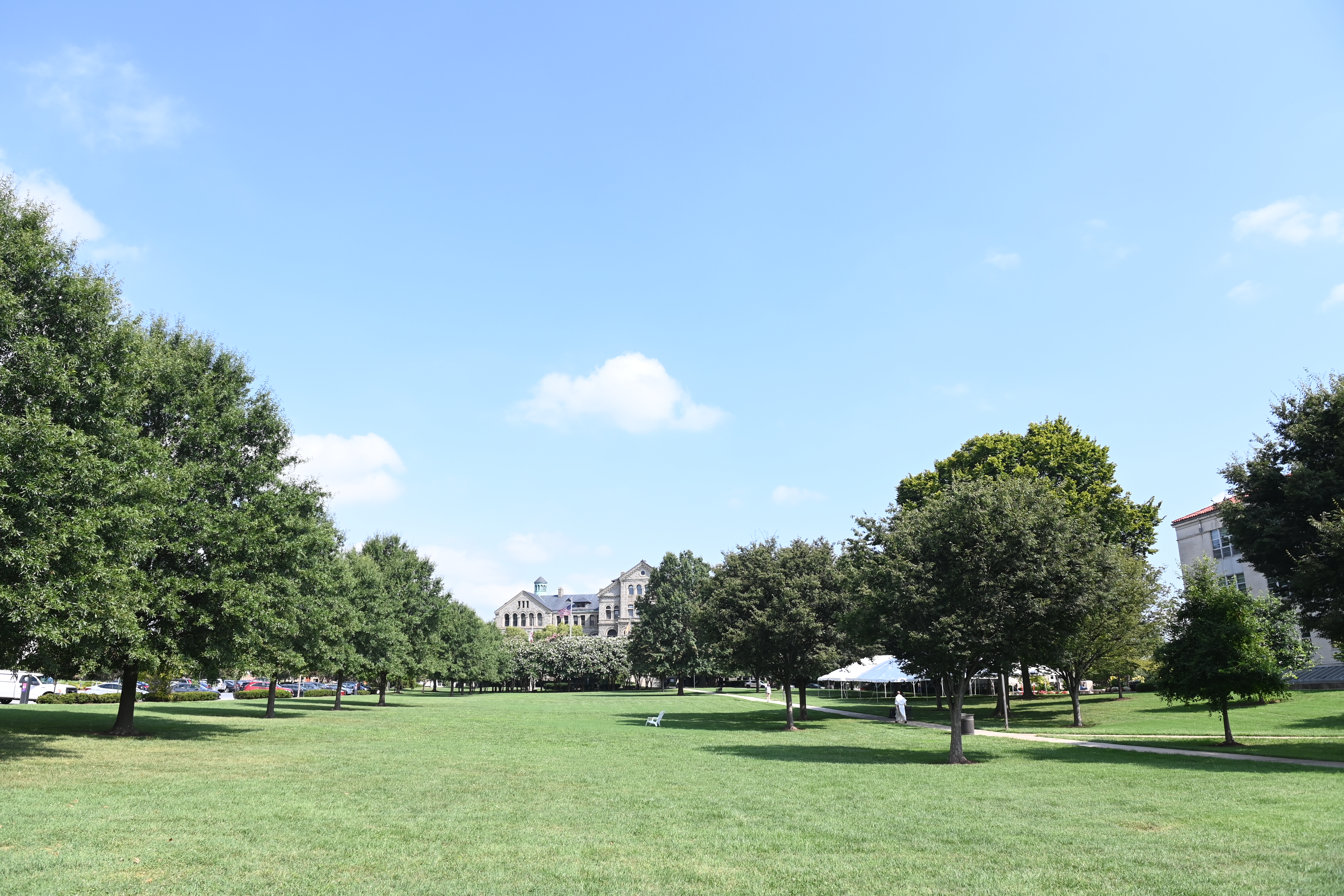
“Catholic identity is not a footnote to the general concept of sustainability but rather imbues every aspect of it.”
Catholic Climate Covenant
Since the initiation of the Five-Year Sustainability Plan, Catholic University has made impressive strides towards advancing sustainability across our campus and broader community.
While the initial five-year period for the Sustainability Plan has concluded, the Office of Campus Sustainability will continue to make progress in FY 2026 and beyond to achieve and improve upon the goals outlined in the plan. The next Sustainability Plan will be released in conjunction with the next Campus Master Plan in FY 2027.
Sustainability is a sustained collaborative effort.
Feel free to reach out to us at sustainability@cua.edu and check us out at www.catholic.edu/green.

